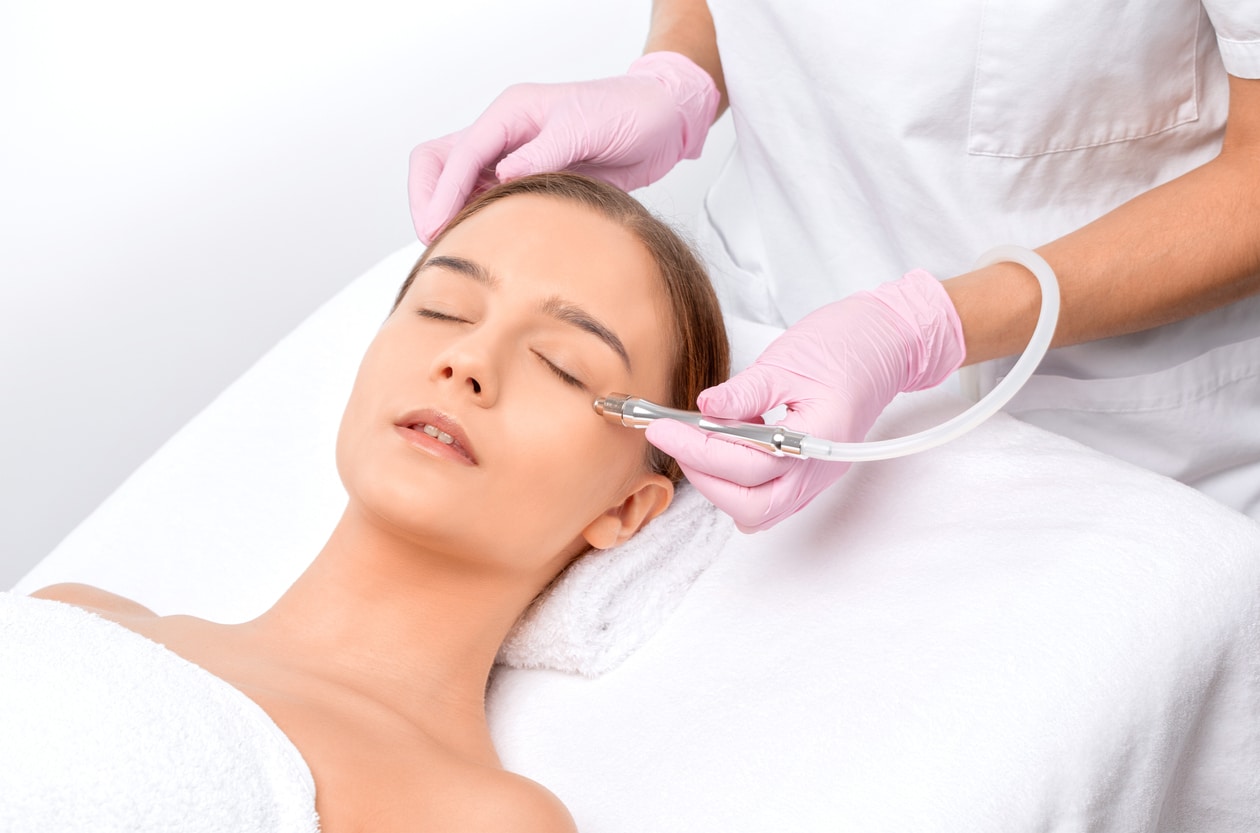Both dermabrasion and microdermabrasion are procedures meant to make skin smoother and more even and help with the removal or minimization of scars. While they both aim to improve your skin’s appearance, they differ in both their intensity and what they can do.
What is Microdermabrasion?

Microdermabrasion is a non-invasive procedure that provides light exfoliation. The procedure uses a handheld device that is guided over the skin to remove the upper layers of dead skin, providing a brighter and more refreshed appearance.
It can be helpful in treating superficial problems such as:
- Mild acne scars
- Dull skin
- Brown spots
- Age spots
- Fine lines
- Minor sun damage
Because it’s less intensive, microdermabrasion requires very little recovery time and doesn’t cause bleeding or much pain. It’s also relatively quick, with the entire procedure taking roughly 30-60 minutes.
What is Dermabrasion?
Similar to microdermabrasion, dermabrasion uses a handheld device to peel away layers of skin. However, dermabrasion is more intensive and removes the uppermost layers of your skin, as opposed to only dead skin, triggering the growth of new, smoother skin.
Dermabrasion can be effective in treating or removing:
- Scars from acne, injury or surgery
- Fine wrinkles
- Age spots and sun-damaged skin
- Precancerous skin patches
- Tattoos
Because it’s more intensive, dermabrasion can produce more significant results than microdermabrasion. However, it also has a longer recovery time and can be more painful. The typical recovery time is between 10-14 days, and during recovery patients can experience:
- Skin that is red and swollen
- Tingly, burning or aching skin
- Itchiness as new skin grows
Your doctor may prescribe pain medication during the initial recovery process. If you experience severe pain or symptoms that do not begin to improve after several days, contact your doctor immediately.
It’s important to take it easy while recovering from a dermabrasion procedure. You can resume most normal activities within two weeks. However, you may be advised to avoid sports for four to six weeks as you continue to heal.
It’s also very important to take extra care to protect your skin from the sun for 6-12 weeks as you recover. This may mean staying indoors as much as possible or making sure to wear sunscreen and protective hats when out walking at Wilderness Park.
Contact a Skin Specialist
We all want to look our best, and that often starts with great-looking skin. Finding out what skin resurfacing procedure works best for you will depend on factors like skin tone, overall health and expectations. To find out what treatment is best, contact one of our Med Spa experts at Lake Jackson ENT & Med Spa and set up an appointment today.